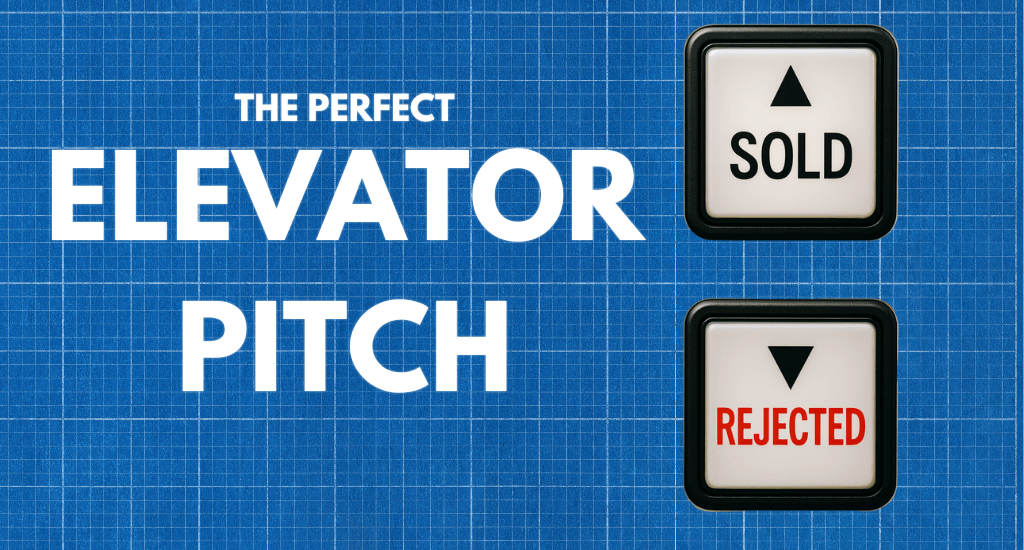Good Morning! It’s National Poem in Your Pocket Day, so we pulled this poem out of ours, special for you:
We dance through calls, we twirl through doubt, "Circle back next quarter," they lovingly shout. Decks in the inbox, demos on Zoom, All just to hear, "Can you resend that soon?"
Ok, now let’s get into today’s Follow Up. 😁
How to write an elevator pitch that sells 👀
Secret sauce for LinkedIn DM’s ❓
AI cold called the wrong guy 😅
Sales jobs & a meme 😂

Write a 30-Second Pitch That Sells

Imagine this… You step onto an elevator, and there's the VP at that dream account you've been trying to reach for months.
The doors close. And now you have exactly 30 seconds before this rare opportunity is gone forever. What do you say?
In these brief, accidental moments, having a killer elevator pitch ready is the difference between "here's my cell number" and "nice weather today."
And look, you probably won't literally meet your prospect in an elevator (though crazier things have happened). But being able to explain your value proposition in 30 seconds without sounding like a desperate robot is a skill every rep needs.
Today, we're breaking down how to craft an elevator pitch that actually works. 👇
The Psychology Behind Effective Pitches
In a professional setting, when someone asks, "What do you do?" they don't care about your company history or feature list. They're wondering if you can solve their problems.
Our brains are hardwired to pay attention to things that benefit us directly. That's why company-centric pitches ("We're the leading provider of...") bomb, while benefit-focused pitches ("I help companies like yours...") actually work.
The science of first impressions tells us something crucial: People decide if they want to continue talking to you within seconds. Not minutes. Seconds.
The most effective pitches acknowledge this reality by immediately disrupting the expected "I work at Company X" pattern and jumping straight to value.
1. The Core Framework
A powerful elevator pitch follows a simple structure:
Who you help (specific audience)
What transformation you deliver (outcome)
How you do it differently (unique approach)
This can be distilled into: "I help X achieve Y by doing Z."
For example: "I help manufacturing companies reduce equipment downtime by 40% through predictive maintenance software that spots problems before they cause failures."
Notice what this doesn't include: company name, founding date, number of employees, or technical specifications. Those details come later, after you've established relevance.
2. Building Your Perfect Pitch
Start with the transformation you deliver.
What changes for customers after working with you? The outcomes, not activities.
❌ "We provide AI-powered data analysis software."
✅ "We help marketing teams stop guessing what content to create by showing them exactly what their audience wants."
Next, add subtle proof without sounding like a tool: "We've helped companies like yours get over 5 million impressions in the last 90 days."
Always tailor your pitch to who you're talking to. CFOs care about ROI & cost savings. CMOs care about growth & brand impact.
Finally, try your pitch on someone outside your industry. If they get it, you're golden. If they look confused, keep refining.
3. Delivery Matters
Even the perfect script bombs with poor delivery. Your pitch should sound natural, not robotic.
Practice until you can deliver it conversationally. You shouldn't sound like you're reciting a memorized paragraph.
Read the room and adapt. If someone's checking their watch, give them the 10-second version. If they're nodding along, you can expand a bit.
Body language is huge here. Stand straight, make actual eye contact, and vary your vocal pace to emphasize what matters.
Perhaps most importantly, the strategic pause. After your core message, stop talking for a second. This gives them space to process and shows you're confident enough not to word-vomit.
4. After the Pitch (What to do)
The goal of an elevator pitch isn't to close a deal on the spot (although that would be sweet). The goal is to start a conversation.
Always end with a question that forces dialogue:
"Does that sound like something you're struggling with?"
"How are you handling this issue right now?"
This transforms your pitch into a two-way exchange and gives you valuable info about their needs.
If the conversation shows promise, have a clear next step ready: "I'd love to share how we helped a company in your industry solve this exact problem. Can we set a time next Tuesday?"
The real magic happens in the follow-up. Within 24 hours, connect on LinkedIn with a note referencing your conversation. This cements the connection while it's still fresh in their mind.
The best elevator pitches don't feel like pitches at all - they feel like the start of a relationship.
Have you perfected your elevator pitch for the product you sell?
The Hustle x The Follow Up
The Hustle is a must-read for innovators.
This daily newsletter delivers the latest stories in business and tech - what to learn from them, and how to capitalize on them.
For daily insights straight to your inbox, join 1.5M+ innovators who start their day with The Hustle.
